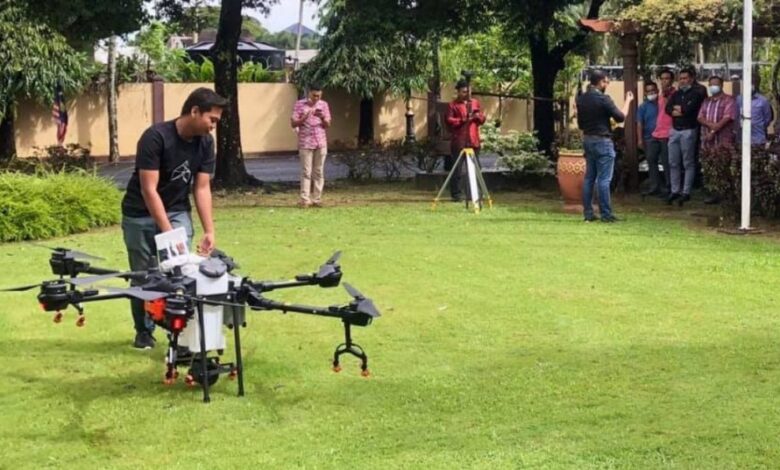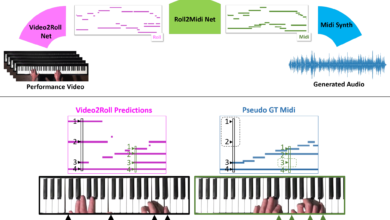
Dronetech Funding And Training Programmes In Malaysia
As the world is in the midst of a global drone revolution, the overall dronetech services industry is expected to be worth RM267 billion by 2025.
In Malaysia, local entrepreneurs and SMEs are being encouraged to explore opportunities in five industry verticals: agriculture, construction, energy, infrastructure, and public safety.
Some common use cases we’ve already seen for drones here have been in agriculture for pesticide-spraying and yield analysis, and for public safety, particularly during the previous MCOs. More recently, AirAsia announced that it’s testing drone deliveries via its logistics arm, Teleport.
These are just some examples of the vast potential drones have, and some steps to further Malaysia’s progress include the following 9 initiatives by the government and private sectors. They provide funding, training, and more, to encourage businesses and individuals to make this IR4.0 shift.
Funding
1. eLadang
Objective: To transform traditional farming into a high-income digital economy profession.
What It Does: As part of Budget 2021, RM10 million was allocated to the e-Satellite Farm Programme (e-Ladang). Grants up to RM30k will be provided to the Pertubuhan Peladang Kawasan (PPK) for the purpose of purchasing agriculture equipment, including drones.
The programme is expected to benefit more than 300 PPKs with a membership of nearly 1 million farmers and planters.
How To Apply: Register with MDEC.
2. DRONE FUND
Objective: To invest exclusively in projects and startups developing dronetech.
What It Does: DRONE FUND is a Japanese VC providing capital investment, operational support, collaborative planning, and regulatory assistance in the global DroneTech industry.
Malaysia’s Aerodyne Group comprises a fundee of theirs, raising US$30 million in a Series B funding round in 2019.
The VC also helps entrepreneurs with applications for non-core patents and Intellectual Property rights for their technology.
How To Apply: Send your enquiries through their website.
3. VentureTECH
Objective: To fund local high-tech businesses and increase their numbers regionally and globally.
What It Does: VentureTECH’s niche is innovative startups that aim to be part of the global supply chain. Target companies include those in bio-based (pharma and biotech), green (clean and sustainable solutions), and emerging industries (those contributing to IR4.0).
How To Apply: Send your enquiries to [email protected].
Regulations & Testing
4. MDEC’s DroneTech Testbed Initiative (DTI)
Objective: To fast-track the growth of Malaysia’s dronetech industry.
What It Does: MDEC is collaborating with the World Economic Forum (WEF) to co-design regulatory frameworks. This is meant to accelerate the societal benefits and mitigate the risks of dronetech.
The agency will play the middleman between industry partners, government agencies, regulators, researchers, and investors. It will demonstrate how drones can drive adoption across various industries after being given a conducive environment for them to operate in.
Collaborating with WEF allows MDEC to leverage on former frameworks and case studies to develop policies that support the future of drone deliveries.
How To Apply: If you are interested to join MDEC’s MyDroneTech Ecosystem, email them at [email protected].
5. National Technology and Innovation Sandbox (NTIS)
Objective: To accelerate the development of innovative solutions from the R&D stage to being commercially ready.
What It Does: NTIS is a facility that allows high-tech startups to test their products, services, business models, and delivery mechanisms in a live, controlled environment.
An ongoing project being tested currently is the Urban Drone Delivery Sandbox by AirAsia’s logistics arm, Teleport. Together with MaGIC, they are looking at developing the long-term viability of an urban drone delivery service.
Furthermore, NTIS is also leading an initiative that will see 5 tech companies testing new agricultural solutions. It’s meant to accelerate the competitiveness of the national agriculture sector whilst improving the socio-economic outcomes for Felda settlers.
How To Apply: Through NTIS’ website.
Training Programmes
These institutions all have the same objectives of training and developing certified drone operators.
6. Asia Drone Technical Academy (ADTA)
What It Does: ADTA offers a professional diploma and industry certification in drone training programmes for commercial and industry-specific uses.
On top of piloting drones, trainees will also learn about their mechanics, data collection, and interpretation.
They welcome beginners and drone pilots of all skill levels and backgrounds. These include school leavers, undergraduates, postgraduates, or working individuals interested to learn.
How To Apply: Through their website.
7. Aeronerve
What It Does: Students will learn the necessary knowledge and skills required for drone operations and their common applications. One example is drone aerial mapping, where students will learn about data acquisition, processing, and analysis techniques.
How To Apply: Sign up here.
8. Drone Academy Asia
What It Does: They offer unmanned aircraft system (UAS) training courses as Human Resources Development Fund (HRDF) claimable corporate programmes. It’s meant to encourage employers to upskill employees in the adoption of digital technologies.
Employers who have registered with HRDF and pay the HRD levy can apply for additional financial assistance for this programme.
How To Apply: You can apply for their corporate training programme here.
9. Axsel
What It Does: A 2-day intensive training programme to help individuals or employees achieve the Remote Pilot Certification. Also HRDF claimable, they list a few careers that may benefit from their course:
- Realtors – Take aerial pictures and videos of properties for sale;
- Videographers – Shoot aerial footage for videos;
- Farmers – Survey and map crops;
- Hobbyists – Take aerial photos and videos for leisure activities.
How To Apply: Interested applicants can reach out to them here.
-//-
In an older interview, Aerodyne CEO Kamarul Muhamed described to Vulcan Post a vision of a drone economy in the next 3-4 years, whereby drones are a part of everyday life, for deliveries, safety, hobbies, and even virtual tourism.
The technology is already there, he was quoted as saying, and what needs to come next is public acceptance. In order to get there, information on dronetech must be disseminated properly, with each stakeholder playing their part.
Relevant bodies need to educate not only those who are interested in being part of the dronetech industry, but also the general population in order to familiarise them with the concept of an upcoming drone economy. After all, they would make up the core consumers of this technology.
- You can read other articles we’ve written about drones here.
Featured Image Credit: Aerodyne Group











































